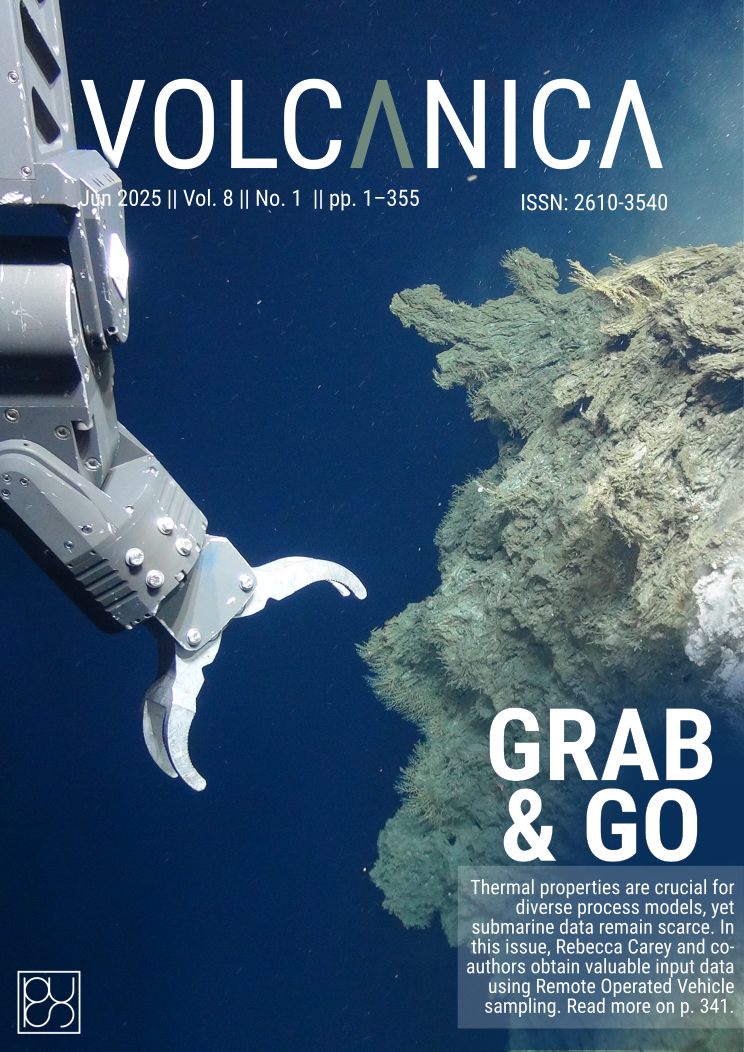Magmatic trees: a method to compare processes between igneous systems
Main Article Content
Abstract
This paper presents the motivation, instructions, and applications for a new graphical method to construct ‘magmatic trees’, which summarize the petrologic and geochemical processes that formed a particular igneous rock unit or eruption. The method is motivated by the need to develop new ways to compare and contrast igneous systems to address frontier research questions in volcano science. It is designed to be easily executed with common datasets, compel the integration of different data types, and facilitate cross-disciplinary conversations about the processes that underly these data (e.g. between the volcano remote sensing and petrology communities). There are numerous potential applications of the method, which include, a) motivating process-driven hypotheses, b) examining the frequency of particular magmatic processes within and among volcanic systems, c) building mantle and crustal magmatic processes into event trees for hazard assessment, and d) teaching petrologic methods. For example, constructing magmatic trees for successive eruptions at a volcano or for multiple volcanoes within the same tectonic setting not only helps quantify the probability of individual magmatic processes but leads to addressing higher-level questions, such as what crustal and magma characteristics cause the same set of processes to be repeated in successive eruptions at Mounts Hood, Unzen, Pinatubo, and Soufrière Hills, while different sets characterize magmas erupted at neighboring volcanoes like Mount St. Helens? In addition, one can imagine a future where machine learning removes much of the human error from magmatic process identification, as well as magmatic tree construction, thereby enhancing our ability to identify patterns of magmatic processes.
Downloads
Article Details

This work is licensed under a Creative Commons Attribution 4.0 International License.
© The Author(s).
Submission of an original manuscript to Volcanica will be taken to mean that it represents original work not previously published, and not being considered for publication elsewhere.
The Creative Commons Attribution 4.0 International License permits unrestricted use, distribution, and reproduction in any medium, provided you give appropriate credit to the original author(s) and the source, provide a link to the Creative Commons license, and indicate if changes were made.
Accepted 2024-12-04
Published 2025-03-04





